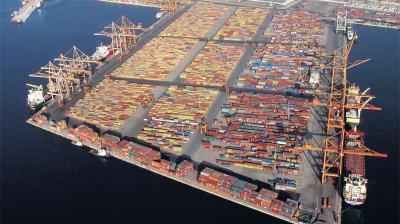Bridging the dividing lines in Greater Eurasia
Competing Unions and Connectivity Wars
In the full version of this article it is argued that the EU could find a partner in China, which is pushing its New Silk Road initiative to include Central Asian states, Russia, and Eastern European states. This would connect the EU and the Eurasian Economic Union (EEU) in a new broader framework 'from Lisbon to Shanghai', stimulate inter-regional cooperation, and lead to greater prosperity across the whole of Eurasia.
There is an increased competition and divergence in development between two forms of regional integration, the European Union (EU) and the Eurasian Economic Union (EEU), which reached a climax in the Ukraine crisis.
Attempts at building a “Common European Home” or a Wider/Greater Europe “from Lisbon to Vladivostok” have come to a complete standstill. Any movement depends on finding a solution to the Ukraine crisis and the emerging connectivity wars between the two blocks also challenge the position of the EU as a global actor in trade and finance. The EU remains interested in bringing together “competing regionalisms” and overcoming new dividing lines by stimulating greater convergence of trade and financial systems.
Against this background the Clingendael Institute identified options for the EU to deal with the new geopolitical and geo-economic realities.
Although the momentum towards a Greater Europe from Lisbon to Vladivostok has been completely lost, the economic realities of proximity and complementarity remain. At the same time, broader Eurasian integration in a number of sectors (at present mainly related to infrastructure connectivity) has been proposed by China’s One Belt, One Road (or New Silk Road) initiative.
It is in the EU's interest to take the EEU seriously, strive for closer approximation of norms and standards and increase connectivity across Greater Eurasia.






